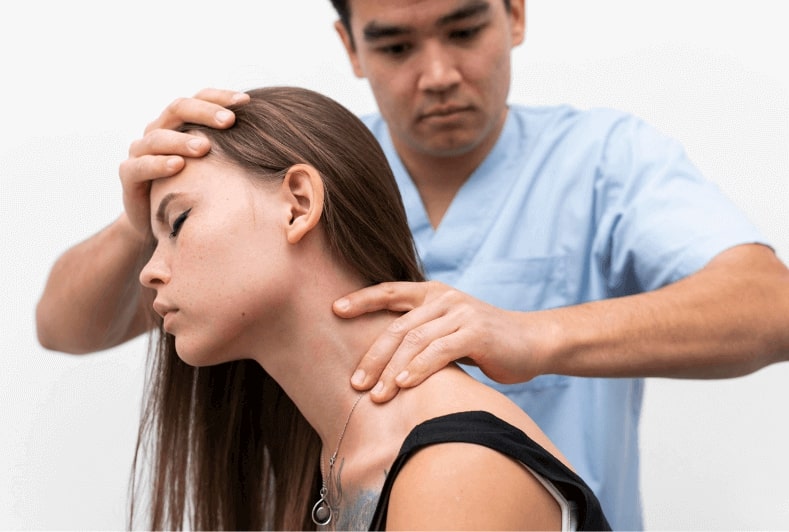Chiropractic Solutions for Your Torticollis Relief
Also called a wry neck, a Torticollis is usually a very painful condition that is always characterised by a flexed and rotated neck posture.
If your child has a Torticollis or a wry neck get it checked out immediately.
What are the causes of Torticollis?
 In the adult population, it is often attributed to:
In the adult population, it is often attributed to:
- Poor sleeping posture,
- Muscle strain,
- Facet joint strain (one of the small joints of the spine),
- Upper respiratory infection (also called Grisel’s syndrome), with flu season upon us at the time of writing this, is one to especially watch out for,
- Spinal disc injury.
What does a Torticollis look like though?
The neck and head become stuck in a fixed posture bent to the side, a flexed little forward and then rotated to the same side. Usually, it’s very difficult for someone suffering from a Torticollis to move their head out of this posture and it becomes all but impossible to perform small everyday tasks like checking your blind spot while driving.
It’s usually VERY painful, especially on movement and you may notice some neck muscle spasms especially on the side the neck is bent towards. There may be some spasm and soreness of the upper back and the shoulder associated with a Torticollis too.
What do you do about Torticollis?
Here are some common approaches to treat torticollis.
Chiropractic Care:
Chiropractors may use adjustments to correct misalignments in the spine and neck, aiming to improve overall musculoskeletal function and alleviate symptoms.
Exercise:
Specific stabilising exercises and stretches can be performed to improve neck muscle strength and flexibility.
Medication:
Over-the-counter pain relievers and muscle relaxants may be recommended by a healthcare professional to manage pain and muscle spasms associated with torticollis.
Heat or Cold Therapy:
Applying heat or cold packs to the affected area can help reduce muscle spasms and ease discomfort.
Botox Injections:
In some cases, injections of botulinum toxin (Botox) may be used to temporarily paralyze specific muscles, reducing muscle spasms.
Surgery:
In severe cases or when torticollis is caused by structural issues, surgery may be considered as a last resort. This is typically rare and reserved for cases where conservative treatments have not been effective.
If you think you have torticollis, contact us at Chiropractic Moves. Treatment depends on a lot of factors and your health care provider can give you some options.
Our Chiropractors Can Help with Torticollis
As your local Paddington Chiropractors, we employ hands-on adjustments to address misalignments in the spine and neck associated with torticollis. These adjustments aim to enhance joint mobility, alleviate muscle tension, and improve nervous system function. Additionally, our chiropractors may recommend specific exercises to strengthen and stretch neck muscles, promoting better posture and reducing the likelihood of recurrent torticollis episodes.
Give us a call to book your next appointment.

Hi, I’m Michael; Chiropractor, Dad, science enthusiast, active weightlifter and keen sportsman. I work with busy and active people who are struggling with pain to find relief from their symptoms so that they can return to an active lifestyle, get through their work day and their workouts without having to pop a pill so that they can feel happier and healthier in their body.

